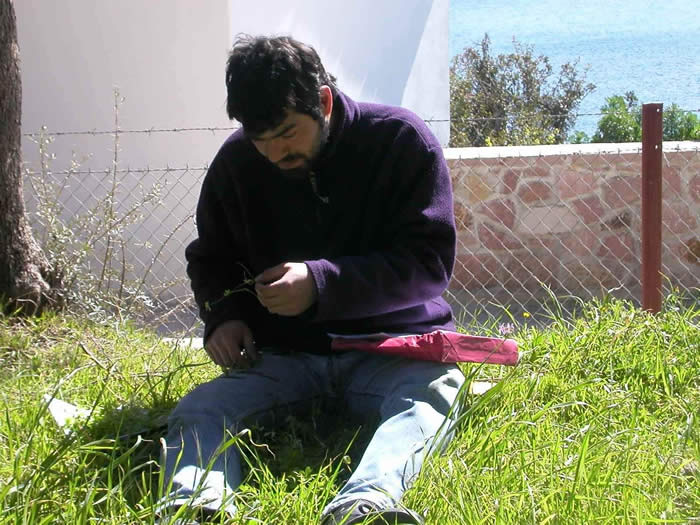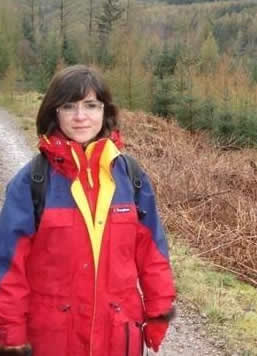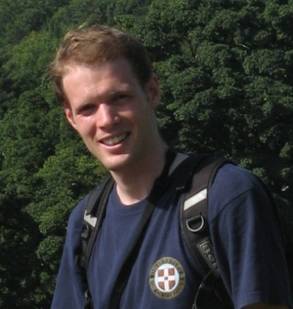
Short Visit Fellows
The short-term visit fellows have been provided with training in key skills for early stage researchers, where training is not available in their home institutions. Each Fellow has normally completed 1-3 modules; received individual training within the supervisor’s research group plus other research groups if appropriate; and undertaken a supervised research project that develops practical use of acquired skills. These proportions have been interpreted flexibly to fit the educational needs of each Fellow.
Stefanos Xenarios
Term of Fellowship: 06/11/2006 - 05/07/2007
The research realised with the Marie Curie Fellowship BIOCONS, was conducted in collaboration with the Sustainable Research Institute and Dr. Mette Termansen. The outcome of this collaborating work was the development of an ecological-economic framework for the assessment of natural resource management options.
Current position: Post doc research fellow at the International Water Management Institute (IWMI) stationed in New Delhi.
Mariagrazia Berloco
Term of Fellowship: 30/04/2007 - 29/08/2007
Magdalena Niedzialkowska
Term of Fellowship: 01/10/2007 - 31/01/2008
Red deer had been extinct in 18-19. centuries in north-eastern Poland and was reintroduced from different places to this region in 19-20. centuries. The aims of our projects were to find out what is the current genetic structure of red deer in the forests of north-eastern Poland and what were its determinants: history of the populations or present habitat fragmentation. In our study we performed genetic analyses using mitochondrial and microsatellite DNA and Geographic Information Systems (GIS) analyses using ArcGIS. We found out that although red deer could move among the forests due to the lack of serious migration barriers, probably the history of reintroduction had the largest impact on the current genetic structure of the population.
Current position:
Alexandros Galandis

Term of Fellowship: 09/10/2007 - 08/05/2008
During my stay at the University of Leeds I studied the relationship between biological diversity and invasions, i.e. how the number and different identities of plant species affect the arrival and establishment of new species. Specifically I examined the way in which various plant characteristics such as height, requirements for light or nutrients or how they grow their stems and roots, are forming their community’s reaction in new plants’ attempts to enter within the community. I used data from a field experiment in a Mediterranean grassland in Greece. From my results I can support that a new-comer plant has to be different enough from the already established ones in order to succeed. Thus, plant assemblies with several different species are less prone to invasions than communities with less species. This is due to the fact that potential invaders have fewer chances to be dissimilar from the initial already existing ones.
Current position: Based at Biodiversity Conservation Laboratory, Department of Environment, University of the Aegean, Lesbos, Greece
Patrizia Tenerelli
 Term of Fellowship: 12/11/2007 - 11/05/2008
Term of Fellowship: 12/11/2007 - 11/05/2008
Considering the complex nature of the agro-energy systems and the needs for adopting a multidisciplinary approach in the research activity, I certainly took advantage from working jointly with the School of Geography at the University of Leeds. Several methodologies for GIS modelling have been discussed during the research activities. A deep knowledge about different approaches and tools for GIS modelling has been acquired while making comparisons between different study areas from Northern and Southern European countries. Finally new spatial modelling methods and GIS skills for environmental applications have been acquired while looking at different software and methods.
Current position: Post-doc at the European Commission, Joint Research Centre (JRC), Institute for the Protection and Security of the Citizen (IPSC)
Petr Keil
 Term of Fellowship: 01/03/2008 - 31/07/2008 + returning 01/06/09 - 31/07/09
Term of Fellowship: 01/03/2008 - 31/07/2008 + returning 01/06/09 - 31/07/09
A deep knowledge about different approaches and tools for GIS (mostly ArcGIS) modelling has been acquired. This is a significant step for me as I was literally a GIS illiterate before coming to Leeds. Learned new ways to connect GIS outputs with statistical software such as R. I also greatly improved my programming skills in R and C++. Started cooperation with many people in the UK (at universities of Leeds, Sheffield, Nottingham and Reading) and this cooperation is surely going to continue in the future.
Current position: Ph.D. student at Department of Ecology, Faculty of Sciences, Charles University, Prague. Due to finish around June 2009. Then plans to look for a postdoc position.
Yan Chen
Term of Fellowship: 25/05/2008 - 24/11/2008
1. I took part in ecological field work on Lundy Island, and learned how to monitor plant population dynamics in the field using fixed point photography, plant counts and animal exclosures to monitor grazing impact.
2. I have been carrying out experiments at the University Experimental Gardens at Leeds, to determine the length of time that figs of Ficus montana remain receptive after female pollinator(s) have been introduced. I am asking whether the length of the receptive period (when figs are attractive to pollinators) varies according to the numbers of pollinators that enter, and whether male and female fig trees are different. The data so far shows a trend that figs decide whether to keep receptive or not according to the percentage of flowers that have been pollinated. Both male and female fig trees use the same cue.
3. I attended the Behavioural Ecology of Parasitoids Summer School in Nottingham University to prepare for experiments in Vrije University, the Netherlands. In Vrije University, we measured the lipid content of pollinator and parasitoid fig wasps. We wanted to know how quickly fuels for flight are used up. We found that the fig wasps had high levels of stored lipids when they emerged, but we failed to make them fly for given periods, and so could not measure their energy consumption when flying. We are still looking for suitable methods.
4. Using collections of identified fig wasps at Leeds I am trying to learn the taxonomy of fig wasps. I aim to be able to distinguish the main groups of fig wasps.
Current position:
Anna Stachniuk
Term of Fellowship: 02/09/2008 - 01/08/2009
During my fellowship I would like to prepare a paper about trends in biological progress in Phanerozoic time derived from fossil records. This project will include some information about tendencies in biodiversity, mobility and productivity observed in the Phanerozoic when the higher organisms arrived. I would like to examine the temporal pattern for the progress of great taxons (division level). It will allow me to anticipate the further fate of plants and animals by knowing the fragment of their recent abundance curve. This demands confirmation and determination of the pattern. So far I have used analytical program like Origin in my work but this fellowship gives me the opportunity to learn another analytical and statistical application like “R”. Actually I am familiarizing with “R” and I am reading recent articles about Phanerozoic time. I hope that learning how to use “R” will be a huge bonus for being a good scientist.
Current position:
Frederica Ravera
Term of Fellowship: 01/05/2009 - 31/07/2009
Meredith Doellman
Term of Fellowship: 01/06/2009 - 31/07/2009

